The bear is also called the "underground knight", but, of course, not because of the "noble nature" of the insect. This beetle simply produces the appearance of a creature chained in armor.
The same kind of insect (common bear), as in Russia, is found everywhere - from cold Norway to the sultry countries of North Africa.
Although the bear is able to live on earth, it prefers underground shelters, and rises to the surface of the soil mainly at night. Wintering, however, falls to a sufficiently large depth - about 2 m.
Material Content:
- 1 Bear: description of the insect, what is dangerous
- 2 What does the bear eat
- 3 What plants are afraid of this insect
- 4 How to get rid of the bear in the garden: folk remedies
- 4.1 We use a soap solution
- 4.2 Glass jar trap
- 4.3 Beer trap for a bear
- 4.4 Egg Shell Fighting
- 4.5 Dung trap against insects
- 4.6 We use needles to get rid of pests
- 4.7 How to build windmills to fight the bear
- 4.8 We plant marigolds in the garden
- 4.9 Onion husk control method
- 4.10 Foul fish is an unpleasant but effective method
- 4.11 We use ordinary vegetable oil
- 5 Pest control chemicals
- 6 Prevention of the appearance of the bear
- 7 Interesting facts about the Bears
Bear: description of the insect, what is dangerous
The common bear belongs to large insects exceeding 5 cm in length. Moreover, her abdomen is several times longer than the cephalothorax. A reliable carapace protects the insect's chest; in case of danger, the beetle draws its head into it. The abdomen ends with two long filiform appendages.
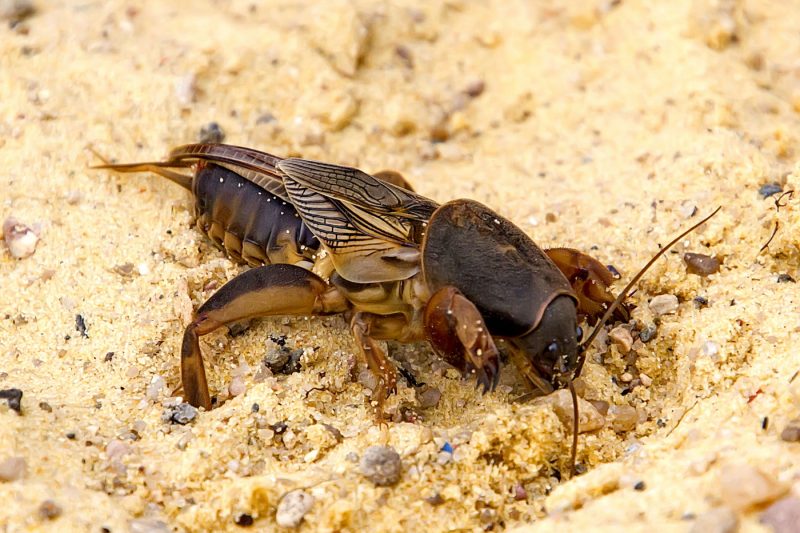
The bear has tentacles, a long mustache, and its jaws are unusually strong. All this is very important for underground life and hunting. In addition, nature endowed this species of insects with claws - they end the forelimbs of the bear.With their help, an insect can move quite quickly through the soil.
There are some more interesting facts that not many pay attention to. They can swim, and with good speed, as well as fly. At night, the bears “sing”, making chirping and chirping sounds.
Bear - an insect is very prolific. Larvae hatch from eggs that the beetle lays underground. In one nest there can be several hundred testicles. The larva of a bear resembles an adult insect, only its color is grayish.
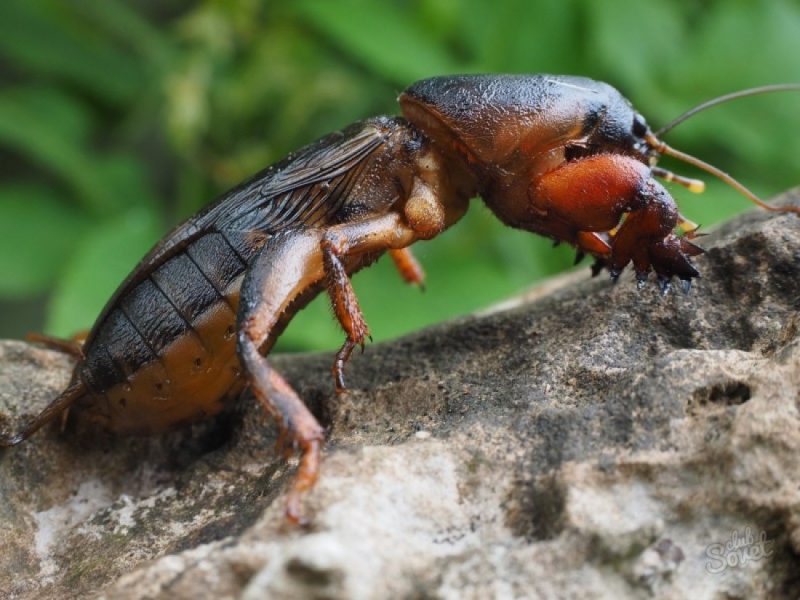
What is the danger of a bear? Her powerful jaws are perfectly suited to bite into vegetables. If this pest appeared in the garden, you will almost certainly lose the crop of root crops: carrots, beets, radishes. Bear will destroy potatoes and cucumbers, if the latter are lying on the ground. Treats for her are turnip onions and cabbage.
And also a large and strong beetle is able to gnaw the roots of shrubs and trees, to lime onion flowers. Therefore, gardeners perceive the bear as the worst enemy and make every effort to get rid of it
What does the bear eat

Why does a person strive to get rid of a bear in his summer cottage as soon as possible? The insect is very gluttonous. It feeds not only on earthworms, larvae and small insects, but also on plant foods, causing considerable harm to cultivated land.
What plants are afraid of this insect

First of all, root crops suffer from the bear. The gardener may lose a crop of carrots, beets. The beetle harms potatoes, cucumbers, lettuce and cabbage, strawberries and strawberries, melons and watermelons, as well as crops and even flowers.
How to get rid of the bear in the garden: folk remedies
The fact that the bear appeared on the garden, the owner will find out in the spring, when the earth warms up. And in May, these pests become especially active. Their presence is indicated by mounds of lumps of earth that appear on the beds.
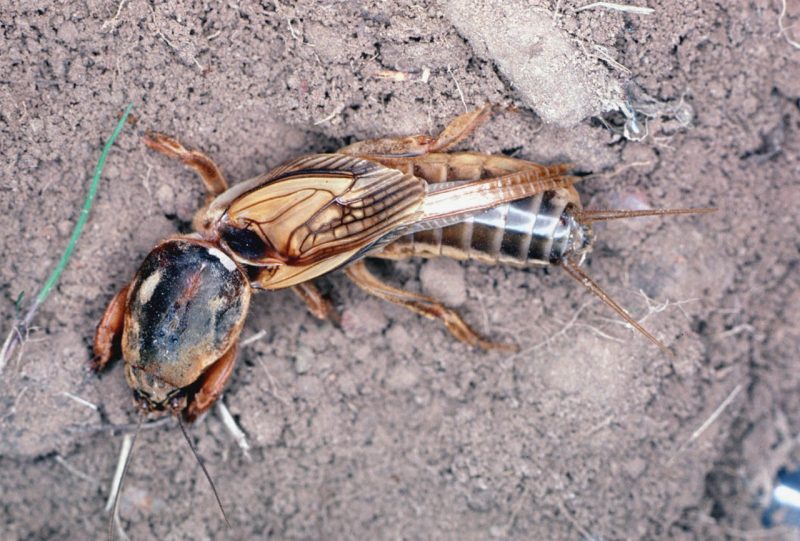
Recently, a man has been trying to get rid of pests on the site, using not chemical, but folk remedies that have been tested for centuries. This makes it possible to subsequently grow an environmentally friendly crop.
We use a soap solution
One of the simple and effective ways to deal with the bear is a soap solution. It can be used if a nest with larvae is found. A bucket of water will require 50-60 g of washing powder and a piece of laundry soap grated on a coarse grater. The solution is poured “with a margin” so that it destroys not only larvae, but also adult insects, including those hidden in underground passages.
Glass jar trap
If there are few insects in the area, you can use traps. Glass jars of 0.5 l or plastic containers are suitable for this. Of course, in such a trap you need to put the bait. The bait is best served by baits such as vegetable oil (preferably karbofos is added to it), honey and, in particular, beer. It is like a voracious insect the same way a cat smells like valerian. Medvedka leaves her underground passage, and moves to the bank, but cannot get out through the slippery walls. It is removed along with the trap and destroyed.
Honey Method
A can is buried in the ground, the bottom of which is smeared with honey. From above the jar is covered with something dense, for example, a sheet of iron, a piece of slate, and then sprinkled with grass, straw. The smell of honey attracts the bear, therefore it is better to cover the walls of the jar with a thin layer of about a third, so the aroma will be stronger. It is imperative to leave a crack in which the bug could crawl. The bear will not be able to get back. The captive can be obtained, it is possible that she will not be alone.
Beer trap for a bear
In this case, the jar is also buried in the ground at a slight slope, and also covered with a board trim, thick cardboard. As a bait, it is best to use fresh beer, about a glass. Traps are checked after a few days.
Egg Shell Fighting
This method is useful for plants and fatal for the bear. Egg shells can be stored during the winter. In the spring it is dried, crushed into powder and “fried” in a frying pan with sunflower oil. This mixture is added to the beds - directly into the grooves - by planting plants. The shell will serve as a supplier of minerals for seedlings, and the beetles, having “tasted” the egg-oil mixture, will die.
Dung trap against insects
A very simple and effective way, it is used when there is a lot of bear on the site. It will be necessary to dig up small holes and lay fresh manure in them. It is difficult to come up with something more attractive for a female who is looking for a place to lay eggs. After 2-3 weeks, the traps are freed from manure with a shovel, the bear and eggs are burned.
We use needles to get rid of pests
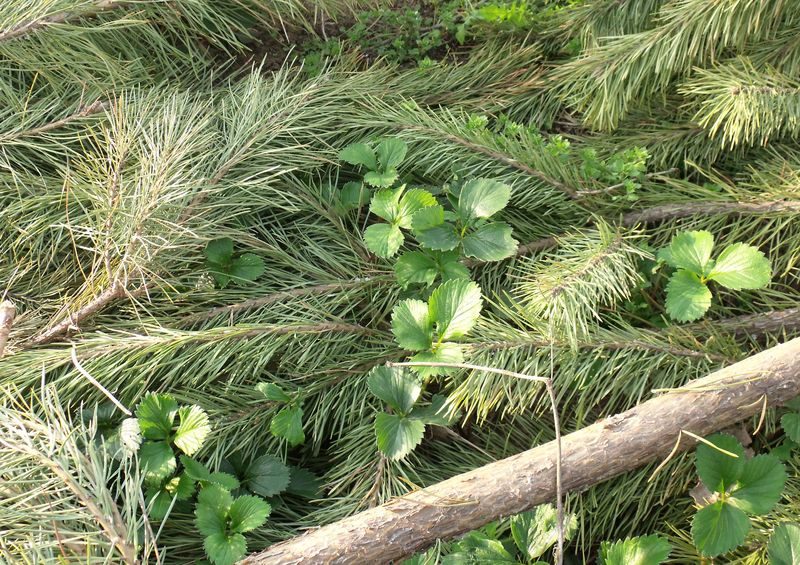
The smell of pine needles scares the bear. You can protect the beds with vegetables by pulling out grooves along their perimeter and sprinkling needles in them.
How to build windmills to fight the bear
Very interesting, unusual and effective way. It will take several iron pipes, the height of which can reach 3 m. They are installed in the garden, and metal propellers are placed on top. Vibration and noise force the bear to leave the favorite area.
We plant marigolds in the garden

Another way to protect plants is to plant flowers known as marigolds between rows. So you can kill two birds with one stone. Elegant flowers will revitalize the site, and the beds will take on a decorative look, and the bear will not approach the vegetables.
Onion husk control method
Effective to combat the bear and onion peel. After the winter season, there may be many. The husk is poured with a bucket of water, and after a week the infusion is filtered. Then it is diluted with water in a ratio of 1: 5.
Wet soil after rain or watering is shed with infusion of onion husks.
Foul fish is an unpleasant but effective method
The smell of rotten fish does not like the man and the bear, too. You can use any fish waste - heads, entrails, fins. When planting tomatoes, cabbage and other seedlings - they are laid in the holes, when planting seeds - they are added along the perimeter of the beds. Bears bypass such places.
We use ordinary vegetable oil
You can also use sunflower oil to fill the pests. It will take 1 tablespoon in a 3 liter jar of water.

Surprisingly, some cats perfectly catch the bear and enjoy them. So if there are pets in the family, they can help the owners in the fight against harmful insects.
If there is a bear on the site, digging the earth helps.
- Firstly, it allows you to detect nests. They are collected in a bucket or bag, carried away and destroyed.
- Secondly, digging in anticipation of cold weather leads to the fact that the bear, already sluggish and not showing activity, are close to the surface of the earth and die in winter from frost.
Pest control chemicals
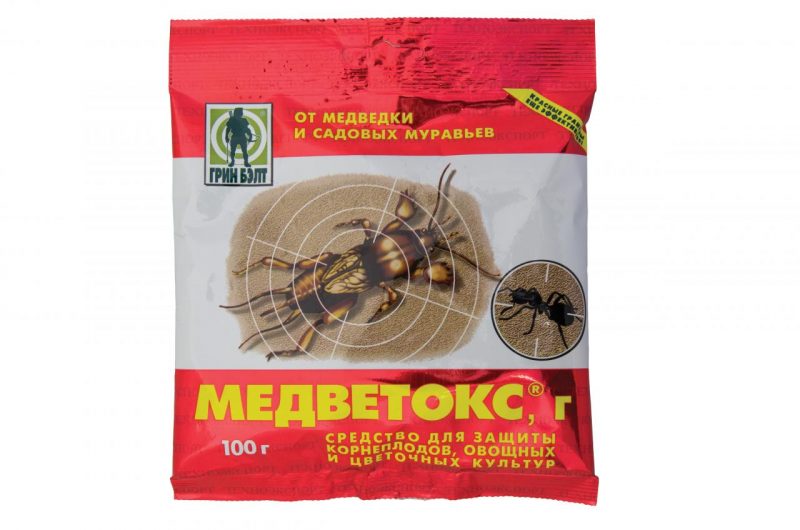
The toxic chemicals that industry produces today are a reliable way to get rid of bears and other pests.
- Medvetox - the name says about the fight with which insects the drug is intended. Granular agent with a high level of toxicity, has an attractive smell for beetles. It’s enough for the little bear to try the chemical to die.
- Chopping - an effective tool that is convenient to use, since it does not harm a person, and the granules have a bright color. They fall asleep in the passages dug by the bears.
- Grizzly - also available in the form of granules that have a neutral color. Quite toxic substance, it is better to work with it with gloves.
- Bankol - This drug acts in a special way. The bear is paralyzed, cannot move and dies of hunger. The product is safe for people.
- Phenoxin Plus - Its smell and taste are liked by the bear and other pests. Just a few granules, covered in a course dug by an insect, to permanently get rid of the problem.
- Boverin - a new and well-proven tool. It is harmless to humans, animals and beneficial insects. But the bears die from him.
- Teddy bear - this pesticide is used in the form of a solution. It has no harmful effect on plants and people, but it allows you to get rid of the bear.
- Thunder - apply in small portions. For the death of insects, 1-2 granules are enough. People should use this product carefully, it is toxic.
Usually gardeners resort to pesticides, if folk remedies for the fight with bears have not justified themselves. And it is right. To begin with, you should try the simplest techniques, and only then, if necessary, take up the "heavy artillery." So there will be more chances to grow an environmentally friendly crop.
Prevention of the appearance of the bear
Fighting with the bears is a rather troublesome task. In addition, sometimes it is conducted with varying success, and it is so unfortunate that a spoiled crop happens!
Therefore, it is worth spending time on preventive measures.
Which ones are most effective?
- Digging the earth. It gives the greatest effect in the fall. In this case, both larvae and adult insects will die from frost. But in the spring, digging beds, it is also possible to detect and destroy both the bear and their nests.
- It is worth abandoning organic fertilizers, in particular, from manure. Because with it it is very easy to bring to the garden, if not the bear itself, then their eggs and larvae.
- The hot, sun-heated earth, these insects simply adore. If you mulch the beds with sawdust - the Bears will like this option much less - they will move to where it is warmer.
- In addition to marigolds, bears do not like some other plants. These include garlic, parsley, cilantro, and of the flowers - calendula and chrysanthemum. The more of the above plants on the site - the higher the likelihood that the bear will not start on it.
- Seedlings, which the gardener especially values - for example, expensive varieties of tomatoes - can be planted on the bed directly in plastic bottles with a trimmed bottom.
In addition, those representatives of the animal world for whom gluttonous insects are food will become your allies in the fight against bears. These are birds and such frequent visitors to summer cottages as hedgehogs, moles, lizards. For them, ordinary bears are a real treat.
Interesting facts about the Bears
Having seen this insect for the first time, summer residents, especially women, may be afraid - will it bite them? But the maximum that a bear can do is slightly scratch human skin with its claws. Her jaws are simply not adapted to bite.

Sometimes in the plots, when creating favorable conditions, the bear can grow up to 12-15 cm.
If the sounds that a bear (song) makes are recorded on a voice recorder and at night turn on this recording at his dacha, other insects may rush to the sound source.
A bear can live up to 3.5 years.
Thus, knowing what this insect is and by what means you can fight it, you have every chance to get rid of the bear at your dacha forever.












